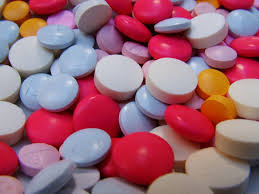Symptom Finder - Glycosuria
GLYCOSURIA
The finding of glycosuria should prompt one to consider first the conditions that are associated with faulty regulation of the blood sugar and sugar metabolism. First and foremost on that list is diabetes mellitus.
However, the differential must include many other endocrine disorders; focusing on the endocrine glands will prompt recall of most of these.
Visualizing the pituitary will prompt recall of acromegaly, visualizing the adrenal gland will remind one of Cushing syndrome and pheochromocytoma, and visualizing the thyroid will prompt recall of hyperthyroidism. Finally, visualizing the pancreas will remind one of diabetes mellitus and glucagonoma. The clinician should be careful not to
forget renal glycosuria (idiopathic or Fanconi syndrome) and starvation in the differential diagnosis.
Approach to the Diagnosis
The investigation of glycosuria should include a glucose tolerance test, chemistry panel, and electrolyte panel. A clinical history of polyuria, polyphagia, weakness, and weight loss will be helpful. If there are clinical features of one of the endocrine diseases listed above, various tests for these disorders and an endocrinology consult should be ordered.
Other Useful Tests
1. Free thyroxine (T4) (hyperthyroidism)
2. T3 assay (hyperthyroidism)
3. Radioactive iodine uptake and scan (thyroid adenoma)
4. Plasma cortisol (Cushing syndrome)
5. Overnight dexamethasone suppression test (Cushing syndrome)
6. Serum growth hormone (acromegaly)
7. 24-hour urine for catecholamine, vanillylmandelic acid, or metanephrine (pheochromocytoma)
8. Skull x-ray (pituitary adenoma)
9. CT scan of the brain (acromegaly)
10. CT scan of the abdomen (pancreatic neoplasm, glucagonoma)
The finding of glycosuria should prompt one to consider first the conditions that are associated with faulty regulation of the blood sugar and sugar metabolism. First and foremost on that list is diabetes mellitus.
However, the differential must include many other endocrine disorders; focusing on the endocrine glands will prompt recall of most of these.
Visualizing the pituitary will prompt recall of acromegaly, visualizing the adrenal gland will remind one of Cushing syndrome and pheochromocytoma, and visualizing the thyroid will prompt recall of hyperthyroidism. Finally, visualizing the pancreas will remind one of diabetes mellitus and glucagonoma. The clinician should be careful not to
forget renal glycosuria (idiopathic or Fanconi syndrome) and starvation in the differential diagnosis.
Approach to the Diagnosis
The investigation of glycosuria should include a glucose tolerance test, chemistry panel, and electrolyte panel. A clinical history of polyuria, polyphagia, weakness, and weight loss will be helpful. If there are clinical features of one of the endocrine diseases listed above, various tests for these disorders and an endocrinology consult should be ordered.
Other Useful Tests
1. Free thyroxine (T4) (hyperthyroidism)
2. T3 assay (hyperthyroidism)
3. Radioactive iodine uptake and scan (thyroid adenoma)
4. Plasma cortisol (Cushing syndrome)
5. Overnight dexamethasone suppression test (Cushing syndrome)
6. Serum growth hormone (acromegaly)
7. 24-hour urine for catecholamine, vanillylmandelic acid, or metanephrine (pheochromocytoma)
8. Skull x-ray (pituitary adenoma)
9. CT scan of the brain (acromegaly)
10. CT scan of the abdomen (pancreatic neoplasm, glucagonoma)

